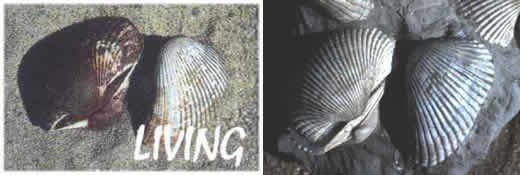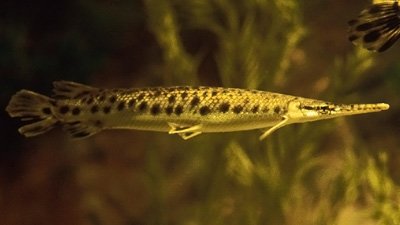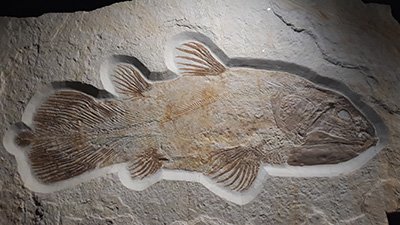Spot the Difference
Fascinating living fossils
Each of the two pictures below (courtesy of Dr Joachim Scheven) shows two different species of the bivalve Anadara.
Can you spot the difference between the living and fossil species? According to evolutionists and other long-agers, the difference is about three million years—but they are identical!
 living Anadara bivalve fossil Anadara bivalve
living Anadara bivalve fossil Anadara bivalve
The right picture is of two species of fossil Anadara from rock labelled as Pliocene, in Italy. The one with slightly gaping valves is A. corbulides, the other A. natalensis. In the top picture are two absolutely identical living specimens, arranged in the same way. Imagine—one is asked to believe that there have been three million years in which there has been absolutely no change, no ‘evolution’ visible at all. Note that:
- Shellfish such as this have a much shorter generation time than humans. The number of generations which would have been born, passed their DNA information to the next generation, and then died, would have been enormous.
- Each time there is a generation, and the DNA is copied, there is a chance of mutations (copying errors, which evolutionists claim is the stuff of evolution) creeping in. Creationists also believe that mutations can cause change—but they degrade information, causing it to be lost or corrupted.
- While these millions of bivalve generations are passing, with mutations happening all the time, there are all sorts of pressures from the environment—changing conditions, predators, competition for survival, and so on. According to evolutionists, natural selection from such causes will act upon the mutations, to bring about evolutionary changes. In fact, it boggles the mind to imagine, if there really were millions of years, how species could avoid changing a little, even if only to degenerate.
The reality is that examples like this are commonplace. Many are on display in the creationist museum LEBENDIGE VORWELT, in Hagen–Hohenlimburg, Germany, run by Dr Joachim Scheven. The museum’s collection of so–called ‘living fossils’ runs into the hundreds. Fossil experts have now begun to talk routinely of ‘stasis’ as a commonplace in the fossil record—this simply means ‘staying the same’, which sounds like the opposite of evolution.
What would we predict the fossils to show on the basis of a recent six-day creation and a worldwide Flood?
- Some fossil creatures would be somewhat different from their living counterparts due to genetic variation within the kind since the Flood, but still basically the same kind.
- Some fossil creatures would not be represented among living things today—extinction, a fact of life since the Curse of death entered the creation, is not evolution.
- Some fossils would be exactly the same as present-day kinds, just as shown in this example, because in reality, only a few thousand years separates the two specimens shown, not millions of years.
Originally published in Creation 19(3):52, June 1997

Answers in Genesis is an apologetics ministry, dedicated to helping Christians defend their faith and proclaim the good news of Jesus Christ.
- Customer Service 800.778.3390
- Available Monday–Friday | 9 AM–5 PM ET
- © 2026 Answers in Genesis




